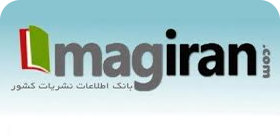The Structural Equation Model of Educational Sustainable Development (Case Study: East Hormozgan Province Education System)
Keywords:
Education, Educational System, Sustainable Development, Educational Sustainable Development, HormozganAbstract
Purpose: The objective of this study is to examine and model the structural equations of educational sustainable development within the education system of East Hormozgan Province. The study aims to identify key factors and relationships that contribute to the effective integration of sustainable development principles in education, based on a theoretical framework derived from existing literature. Methodology: This applied research employs a survey method, targeting all secondary school managers and teachers in East Hormozgan Province, totaling 7,444 individuals. Using stratified random sampling, a sample size of 365 participants was determined through Cochran's formula. Data were collected using a questionnaire based on the theoretical framework and analyzed using SPSS 27 and LISREL 8.80 software. The study employed exploratory factor analysis (EFA) and confirmatory factor analysis (CFA) to validate the proposed model and assess the fit of the data. Findings: The analysis revealed that all dimensions, including central phenomenon, causal factors, strategies, contextual factors, intervening factors, and outcomes, were effectively represented in the educational sustainable development model. High factor loadings and significant path coefficients indicated strong relationships between the variables. The findings also highlighted the critical role of economic, social, and environmental education in fostering sustainable development. The model demonstrated good fit indices, confirming its robustness and applicability for evaluating ESD initiatives. Conclusion: The study confirms the importance of integrating sustainable development principles into the educational framework of East Hormozgan Province. The validated model provides a comprehensive approach to assessing and implementing ESD, emphasizing the need for holistic educational strategies and continuous professional development for educators. These findings offer valuable insights for policymakers and practitioners aiming to promote sustainable development through education.
















